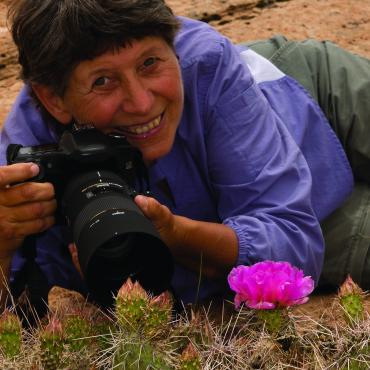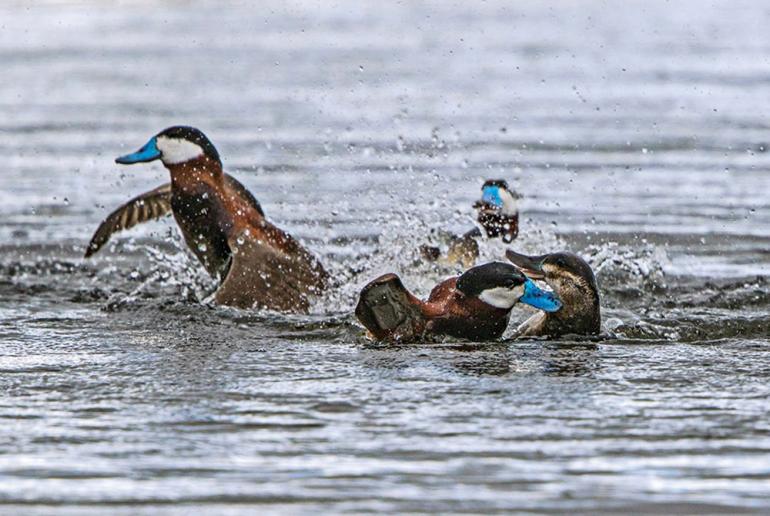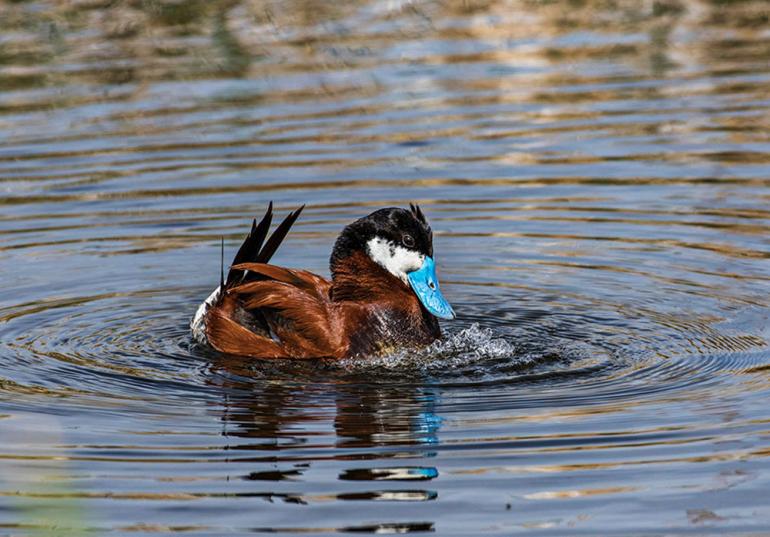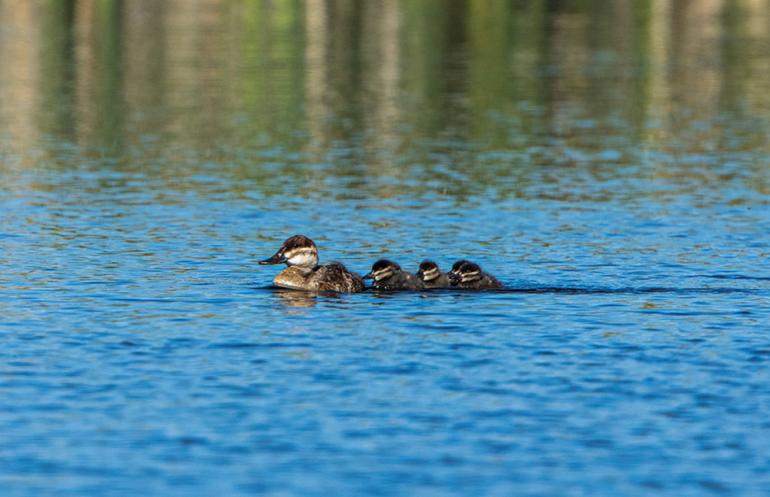Water Fight
Photographing the ruddy duck in rut.
Foamy bubbles form in the water as his blue bill taps on the pristine pond. Upon closer inspection, his bill actually taps against an air sac in his neck in which air is forced from his neck feathers. A swirl of bubbles form in the water at the base of his chest while his stiff tail-feathers extend up. With a low, belch-like croak, he alerts the hidden female. She is awaiting her suitor in the marsh reeds. This is the first chapter in the courtship behavior of the ruddy duck.
Quick and short, exploding action ensues. In a beautiful sequence, with neck stretched, the male charges forward in a splashing spurt, leaving a wake behind. These behavioral signs are cues to the photographer: release my shutter. With a flap of his wings, and feet moving swiftly across the water, his body is elongated. His focus is on the marsh reeds as he lunges toward the hidden female. My focus is on his brilliant bill. Hmm, no response from the reeds... a virile repeat is needed. I’m thankful that I get a second chance behind the camera. I lock in and concentrate on his behavioral cues. Now, I too am ready for action. With outstretched wings, the ruddy thrusts his body headlong and with great intensity, advancing on webbed feet, racing in a flurry across the water. Again, the gigantic splash exemplifies his performance.
For a small and chubby duck (smaller than a mallard), the ruddy is aggressive to the hilt within his territory and protective of his female. He is wrapped in chestnut-colored feathers while his brilliant blue bill brings all attention to his breeding presence. His head is topped off by a black crown, which rises into two feathered horns when he is aroused.
Though less brilliantly colored, the female ruddy is no less aggressive. She will take on the largest of feathered “enemies” who are actually minding their own business, such as coots, that also inhabit the pond. If another suitor approaches and she thinks ill of him, she will give him an aggravated look and an aggressive chase, with bill wide open and ready for harsh pecking. Needless to say, like any female, she is quite particular as to whom she will “date.”
But, the dating scene can get pretty rough when other males approach her. In high alert, her suitor lunges in pursuit. With ruffled feathers, bodies plunge below the turbulent water and a fight arises between four ruddies, of which one is female. It’s difficult to watch this battle. I cheer for what looks like a helpless female in distress. After a few seconds of bodies twisting under water, she emerges and propels herself out of the water in self-defense. What seems like everlasting warfare elapses within 45 seconds. As diver ducks, all survive virtually unscathed, with the original male coming out as the eminent defender and victor.
End result? After 20-26 days of incubation, four robust chicks swim behind their mother. As for me? My result is endless weeks of photographing several of these entertaining ducks, and learning their mating and behavioral tactics.
Carol Polich is an accomplished photographer and adventure-travel writer. For the past several years, she has given many photo workshops in the field, with a hands-on teaching approach. She currently teaches private classes.







